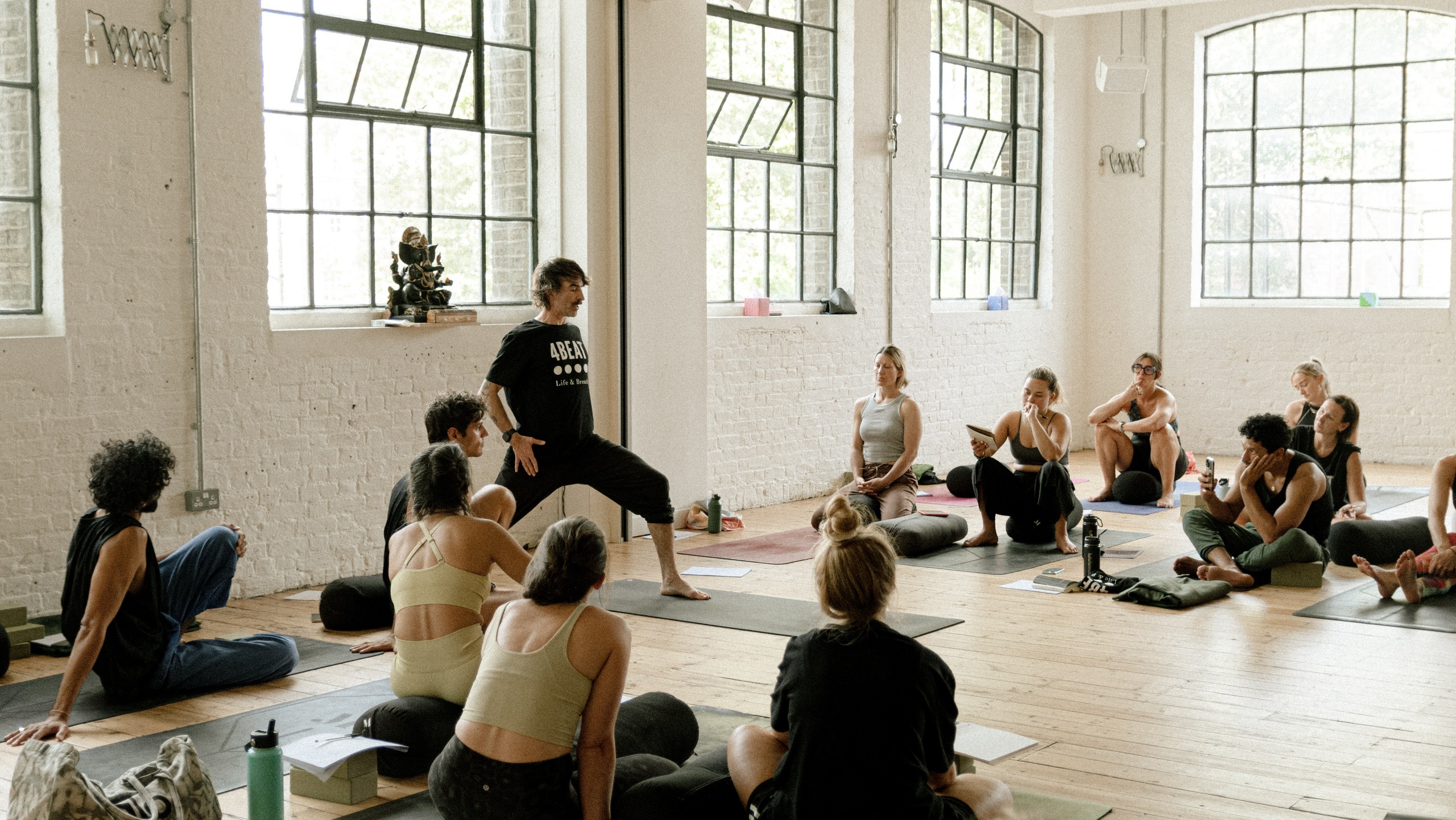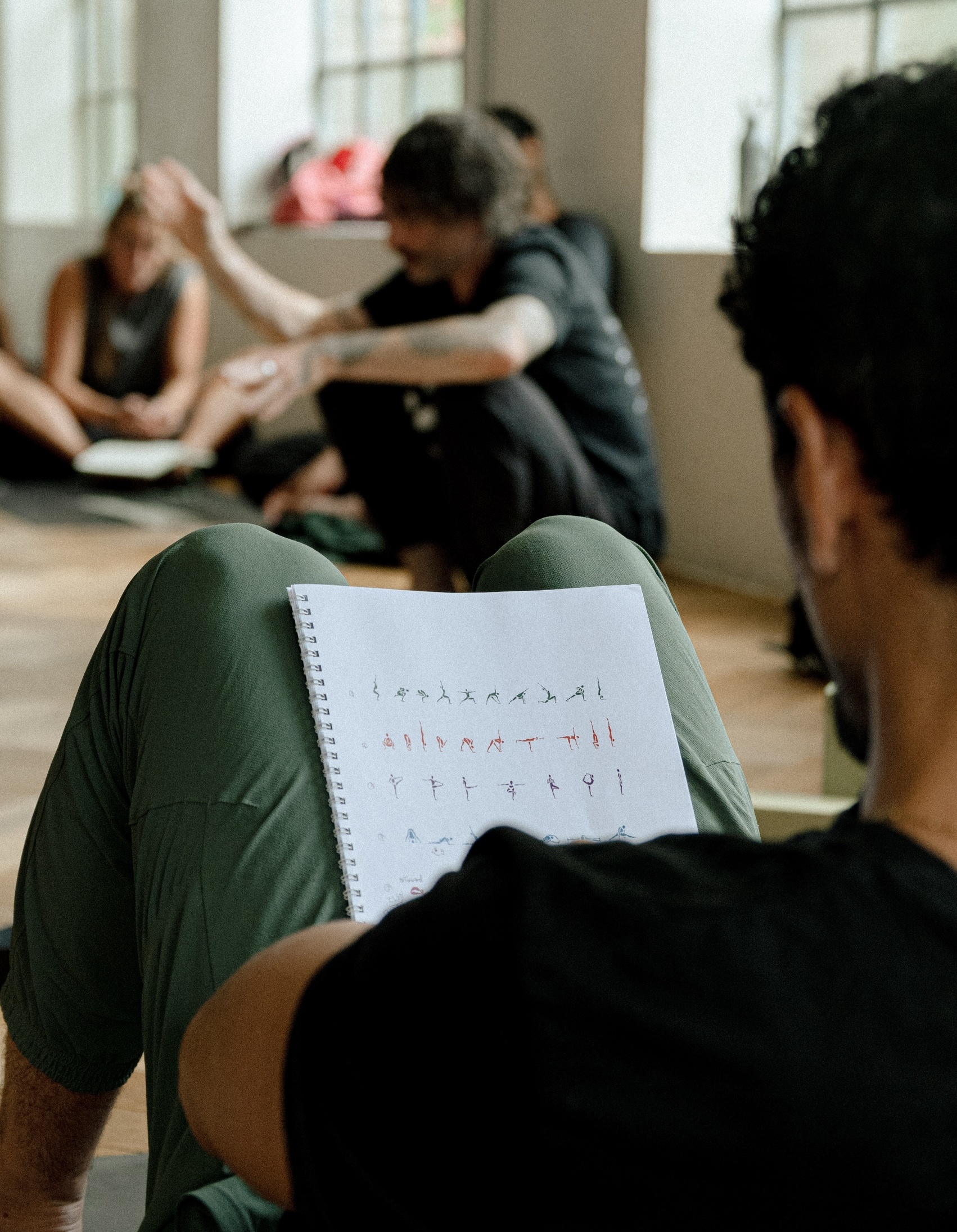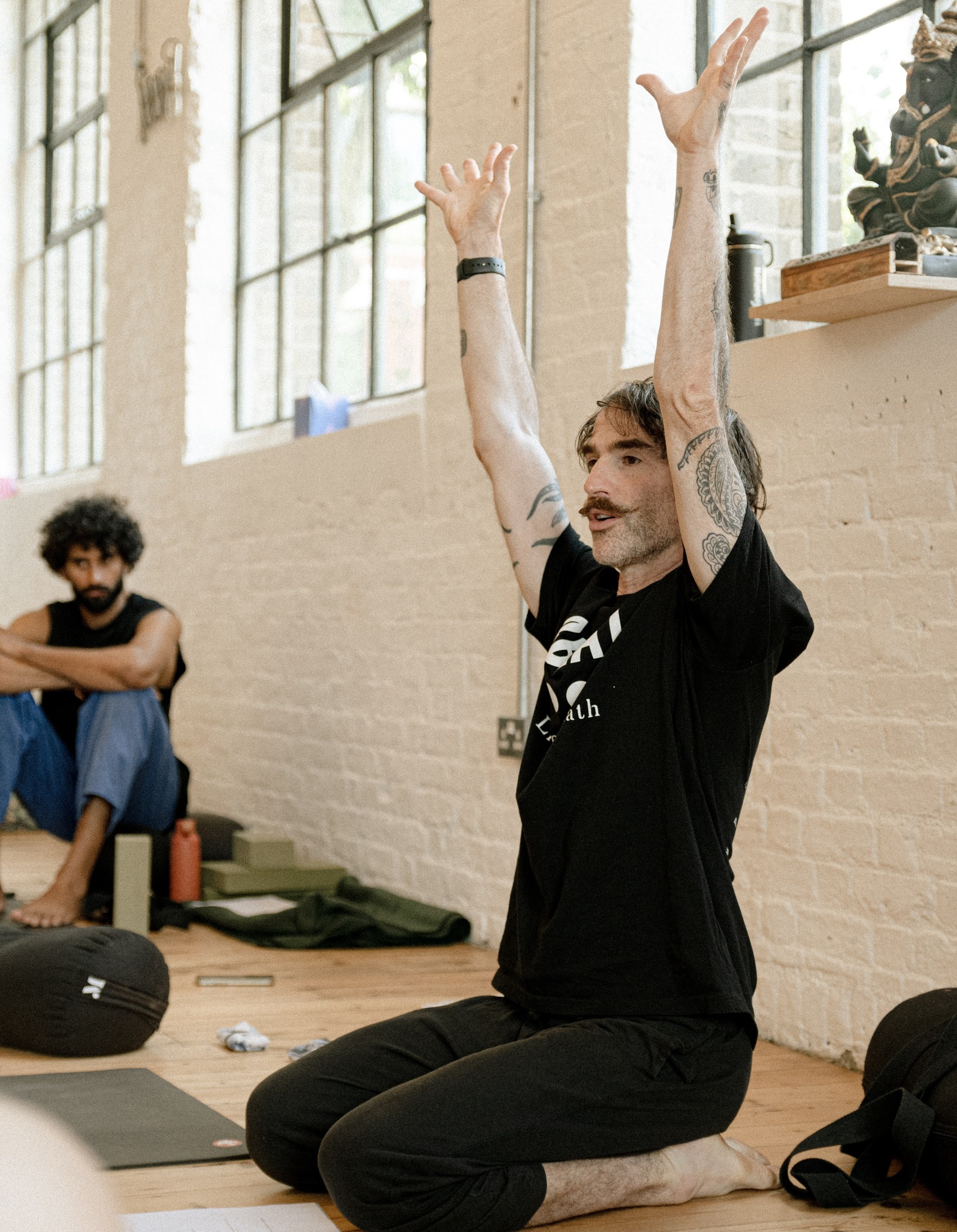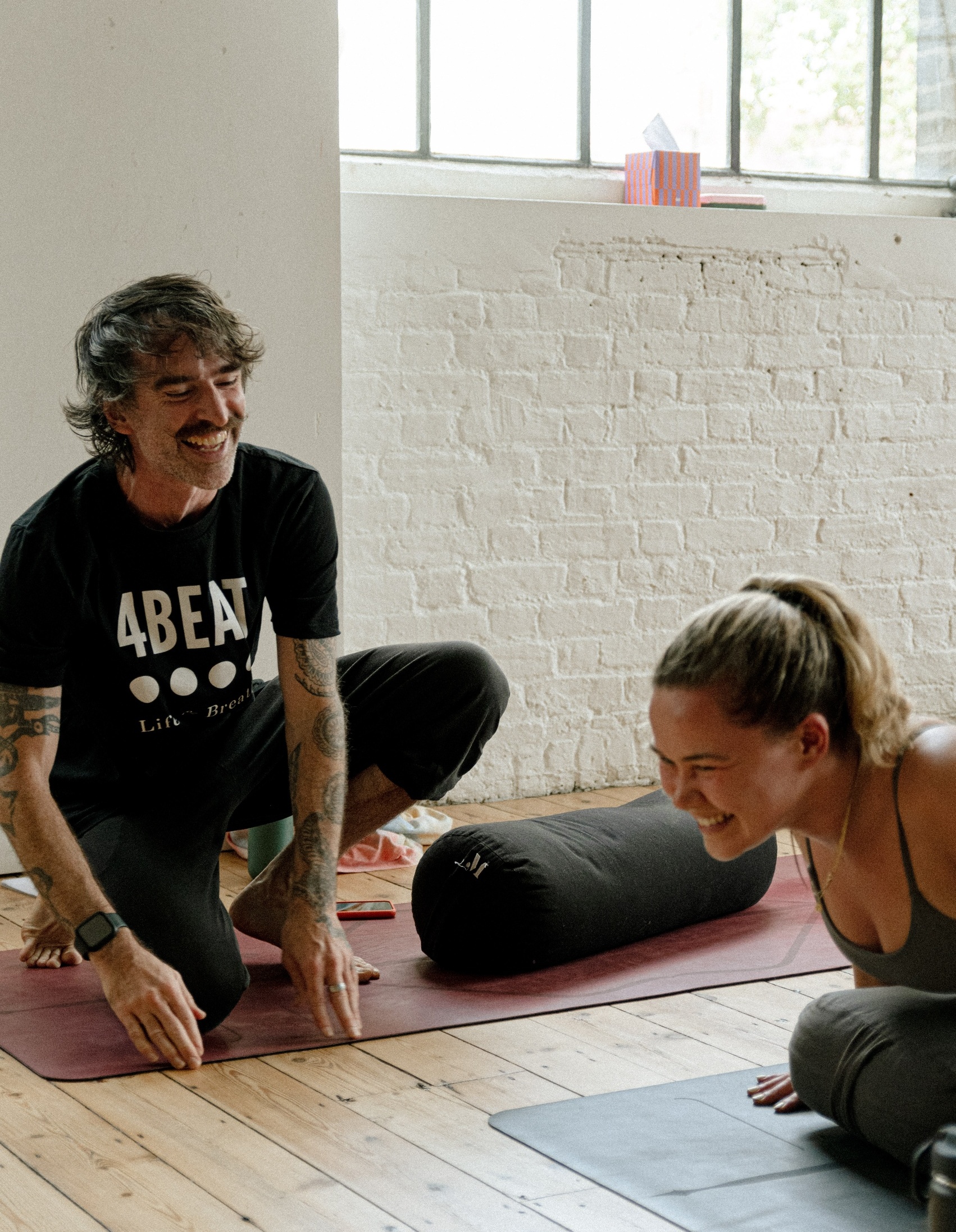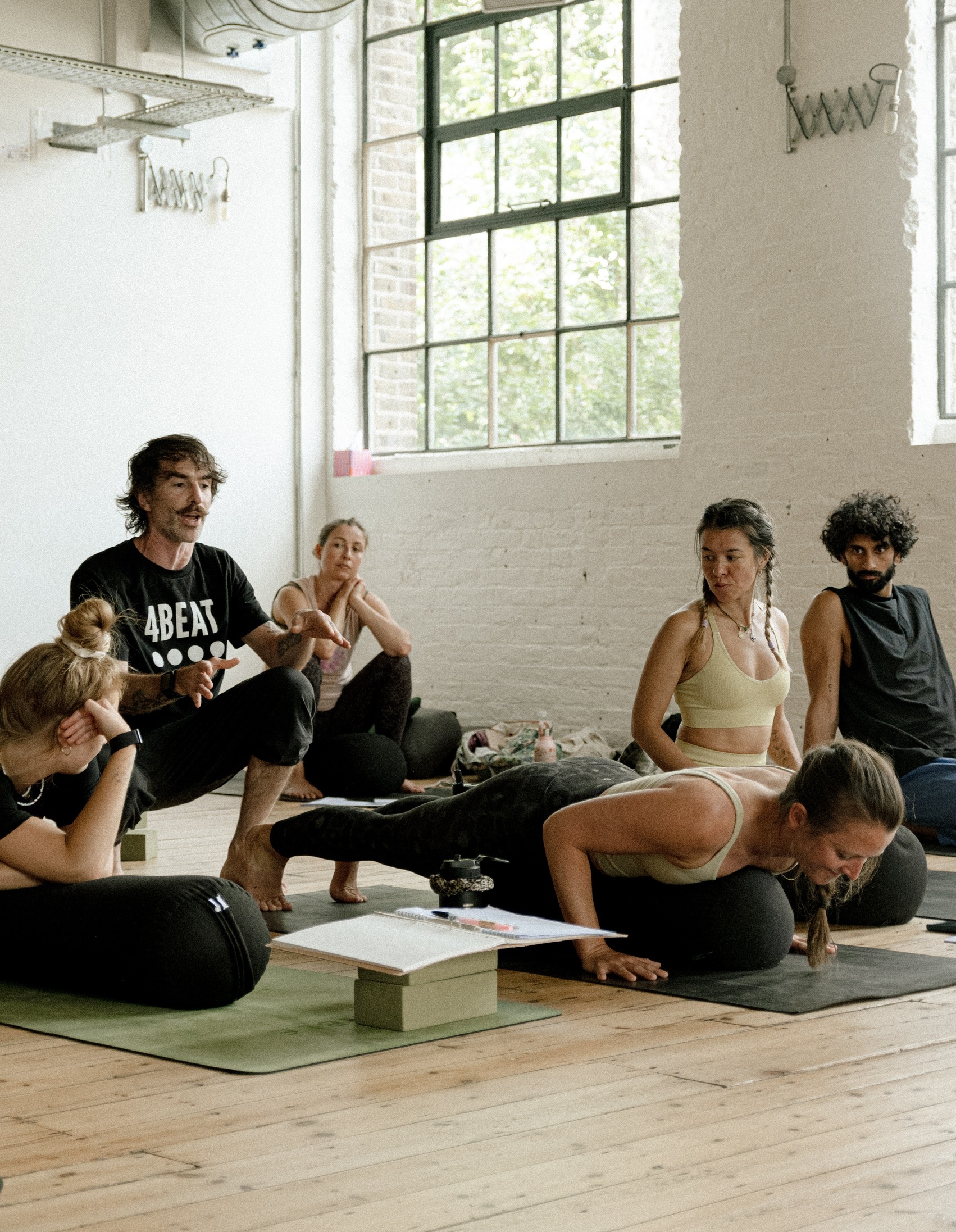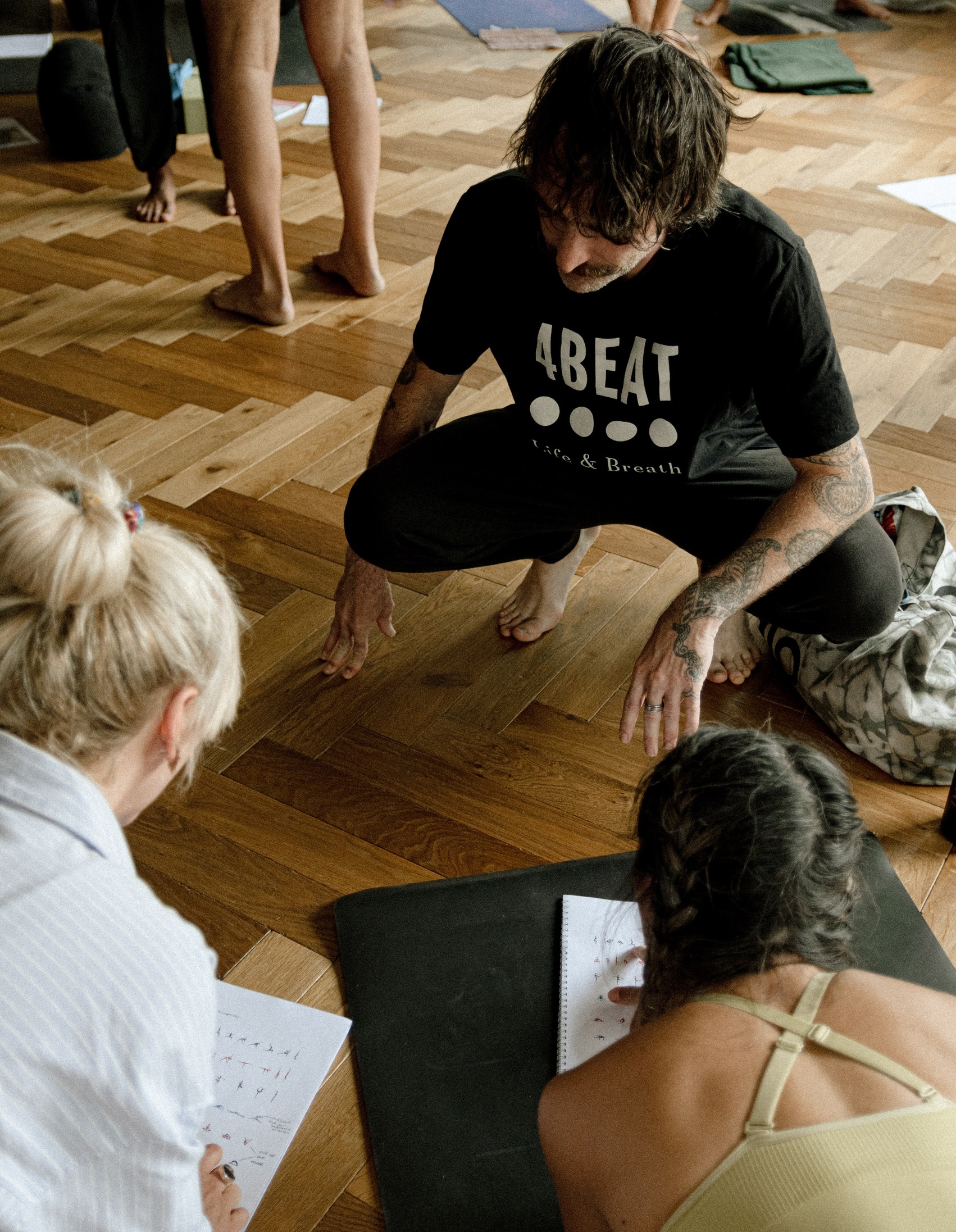The following topics will covered throughout the training
Sequence, Asana and Alignment
Throughout the training, you will build your knowledge and ability to create a safe, effective, and purposeful yoga class. You’ll cover key alignment principles, posture modifications and how to cue clearly for diverse student needs. You’ll learn how to use the sequence to teach themes, peak poses, or specific outcomes while ensuring progression and balance. By the end of this training, you’ll be able to confidently deliver intelligent, inclusive classes that support each student’s individual journey.
History and Philosophy of Yoga
What is yoga? Where did it come from? Gain a foundational understanding of yoga’s rich cultural and spiritual roots. Explore key texts such as the Yoga Sutras of Patanjali, the Bhagavad Gita, and the Upanishads, and gain insight into core concepts like the Eight Limbs of Yoga, karma, dharma and liberation. You’ll trace yoga’s evolution from ancient India to its global presence today, highlighting key figures and movements. Through reflection and discussion, you will learn how to integrate yogic philosophy into modern teaching and your own personal practice, fostering a deeper connection to yoga as a holistic path of self-awareness and transformation.
Teaching Yoga
Explore the ethical foundations of teaching yoga, emphasising integrity, responsibility, and self-awareness in the role of the teacher. Key topics include setting clear boundaries, cultivating mutual respect, and maintaining professionalism in teacher-student relationships. You’ll look at power dynamics, cultural appropriation, and the importance of honouring yoga’s roots while teaching in diverse, contemporary settings. You’ll look at what’s commonly referred to as “the business of yoga” and how to navigate life as a newly-qualified yoga teacher — where to get a job, and how to get it. You’ll look at use of social media as a marketing platform and how to use it to build your classes. Throughout the training in every module, you’ll also practise teaching your fellow trainees.
Anatomy and Physiology
This training will give you a foundational understanding of anatomy and physiology in order to support safe, informed, and effective yoga teaching. Trainees will explore the major systems of the body—particularly the musculoskeletal, respiratory, and nervous systems—and how they relate to movement, breath, and stillness in yoga practice. Emphasis is placed on functional anatomy, helping you understand how different bodies move and how to recognise and accommodate individual variations in range of motion, joint stucture, and muscular engagement. Key topics include common injuries and how to avoid them, and the biomechanics of key asana.
Accessibility and Inclusivity
What makes a yoga class accessible and/or inclusive and how can you ensure that you create this type of environment for your students? Explore how to create inclusive, accessible yoga spaces that welcome and support students of all abilities, backgrounds, body types, and identities. Trainees will examine the social and structural barriers that can limit access to yoga and learn strategies to foster a more equitable practice environment. You’ll learn practical tools for adapting poses, how to sequence inclusive classes, and use language that is empowering, non-assumptive, and trauma-informed. By the end of the training, you’ll be better prepared to hold space for diverse communities, making yoga a more welcoming and transformative practice for everyone, regardless of their unique circumstances or identity.
The Art of Adjustments
Learn the principles and practices of offering safe, respectful and effective hands-on adjustments. Trainees will learn how to assess when an adjustment is appropriate and how to support students in deepening their practice without causing discomfort or injury. You’ll learn clear communication, consent and how to cultivate trust between teacher and student. You’ll learn how to use verbal, visual and tactile cues to guide students, and offer adjustments with confidence, sensitivity and with a clear intention to serve the student’s practice. Ethical considerations are deeply integrated with a strong focus on honouring each student’s autonomy and bodily sovereignty.

